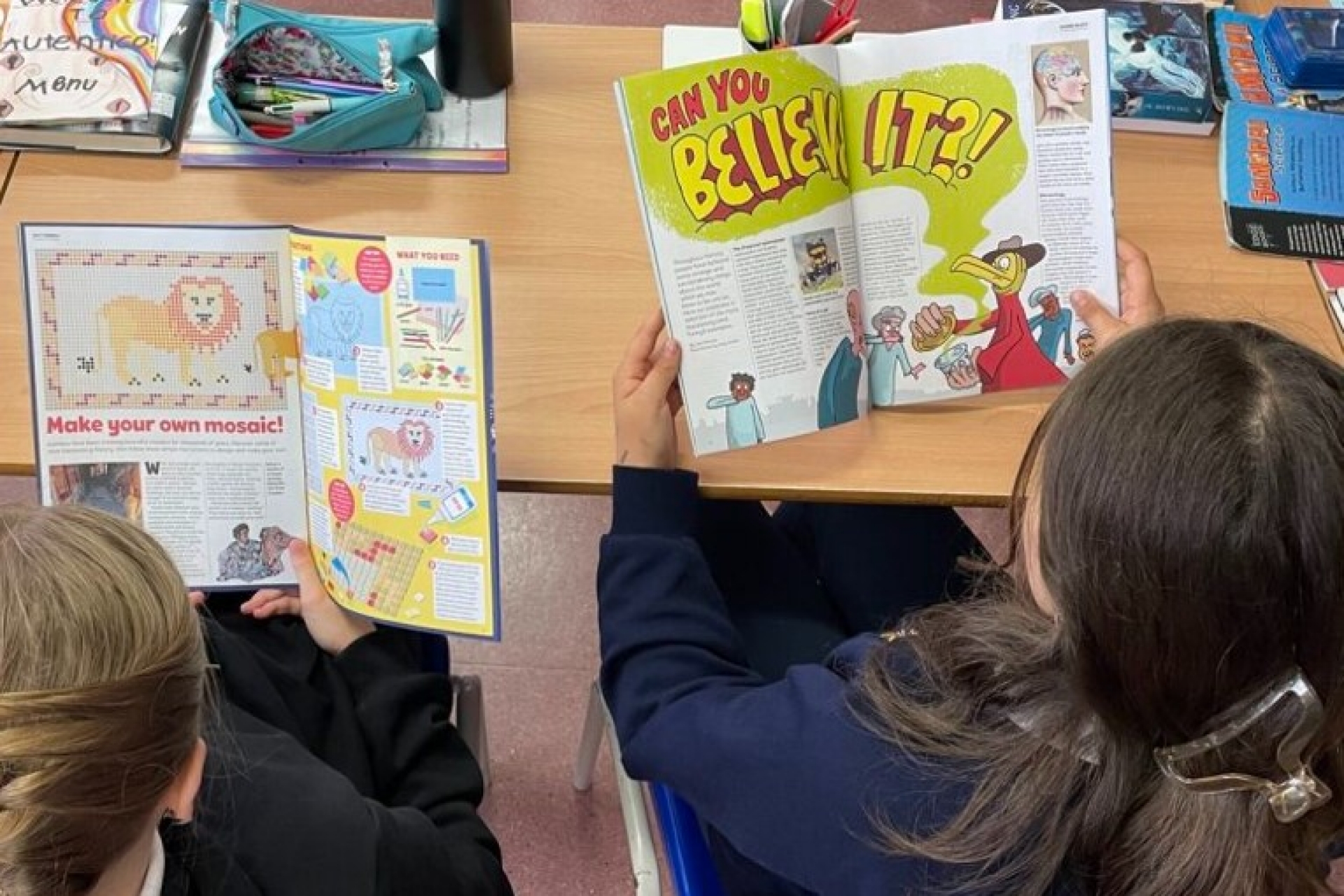In 2023 OU RfP worked on a study with What on Earth! Magazine to explore the possibility of a children's monthly non-fiction magazine driving an increase in reading engagement for KS2 pupils. Tell us more about the study please.
The study took place in a 12-week period between April and July 2023 with Year 5 pupils from Sir Thomas Abney Primary School in Hackney, London. The research team wanted to explore how WoE Magazine could engage pupils in reading (particularly, more reluctant readers) and whether there was any difference in gendered engagement. We also wanted to see how the magazine could potentially grow informal ‘book talk’ at home and in school.
We administered baseline and exit surveys designed specifically around these themes for pupils, teachers and families in order to ascertain any changes in motivation or reading behaviours. My favourite part of the study, however, was the pupil focus groups which took place at the mid-point and the end of the study. It was great to hear directly from pupils about how they were using the magazine and also how their interests and reading preferences were developing, over time.
We are big advocates of reading for pleasure here at LoveReading4Kids and LoveReading4Schools and believe magazines and comics are the perfect gateway to reading for many children. Is that part of what prompted this research?
Absolutely! As you know, reading for pleasure is a matter of social justice and this is one of the core drivers of The Open University RfP team’s work and research. We know from the recent PIRLS report (Progress in International Reading Literacy Study, 2023) that English children’s attitudes to reading are continuing to decline and are very low compared to their reading skills. Essentially, PIRLS found that many children in England can read, but don’t choose to do so.
Sir Thomas Abney Primary school wanted the opportunity to use magazines more widely in their reading provision – a medium that was not previously tapped into. The study gave them the opportunity to introduce this new type of reading, giving teachers and pupils the opportunity to read for different purposes. WoE Magazine is the UK’s fastest-growing children’s magazine and they were interested in finding out how readers interacted with the publication. As a researcher, I was keen to explore how the use of magazines might re-engage the disengaged by helping children to see reading differently.

What were the key findings of the study, and were there any surprises?
The process of analysing and triangulating data was interesting and definitely threw out some unexpected outcomes. According to the surveys, pupils’ reading engagement increased from the start to the end of the project; however, we found that for those children who were already avid readers, the magazine did not further increase their engagement.
The exciting finding was the level of interaction and the social nature of reading that started to emerge for the more disengaged readers as they read, shared and ‘blethered’ about different sections of the magazine. Groups of children were huddling up to explore the facts, puzzles and quizzes.
As every child had their own copy of the magazine (one edition per month), they had multiple opportunities to read, share, explore and discuss what they found most interesting. There wasn’t any significant difference in gendered reading engagement overall; however, there was a difference in how boys and girls engaged with the magazine content. The boys were interested in puzzles and the central article feature; the girls were interested in photography and quizzes.
Another exciting finding was that pupils’ access to the magazine started to filter into their wider borrowing habits. More children were choosing non-fiction reads from the library, keen to explore topics discovered in each issue. There wasn’t any significant impact on home-reading habits as the study, but this would be something interesting to return to, over time.
What can schools take from these findings, and what would your recommendations be for schools looking to ensure a broad range of reading material in their classrooms and libraries?
My favourite saying is, ‘Give them more than cornflakes!’ What I mean by this is to ensure that a wide and varied reading diet is available for pupils. Would you like to eat plain cornflakes for breakfast every day of your life? Probably not. It’s the same with reading. Think about the types of books, ebooks, magazines, audio books and other materials that are on offer. Which ‘tasty’ reading materials are teachers promoting? How are these linked to pupils’ interests? The OU RfP website has some fantastic, free reading surveys that teachers can use to ascertain what children might be interested in and how to target their provision. For many children in the study, WoE magazine helped them to vary their reading diet which was delightful to see as an observer.
We understand there is more research afoot, what does Phase 2 of this project look like and what are you looking to achieve through that?
Yes, we are currently going through the process of approval for Phase 2 of the project which will involve a larger sample of schools and pupils from across the UK. In Phase 2, we are hoping to focus more intently on pupil engagement. What is it about the magazine medium that promotes curiosity and interest? How are the disengaged becoming more engaged with reading and why? What works and for whom?
We are also interested in further exploring the Phase 1 finding about the impact on wider reading choices as a result of exposure to the magazine. Ultimately, we are keen to re-engage the disengaged and we are looking forward to further exploring how magazine reading could potentially play a part in this process. If you’d like more information about the What on Earth! Magazine study (Phase 2), you can contact John Gordon Reid from What on Earth! magazine john@whatonearth.co.uk
Kelly Ashley, Lecturer in RfP The Open University, @kashleyenglish



Comments (0)
Leave A Reply
You must be logged in to post a comment.